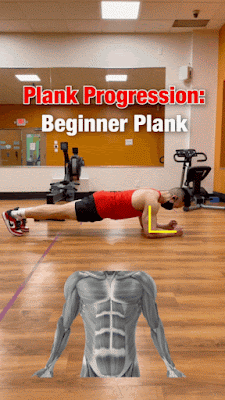The Correct Plank Form: A Comprehensive Guide
The plank is one of the most effective exercises for strengthening the core. However, to reap its full benefits and avoid injury, it's crucial to perform the plank with correct form. Here’s a detailed guide to help you master the perfect plank position.
Why Plank Form Matters
Maintaining the correct plank form ensures:
- Effective Core Engagement: Proper form targets the abdominal muscles, obliques, and lower back effectively.
- Injury Prevention: Correct alignment minimizes the risk of strain on the lower back, shoulders, and neck.
- Overall Body Strengthening: Engages multiple muscle groups including shoulders, arms, glutes, and legs.
Steps to Perform the Perfect Plank
1. Start with the Basics
- Position: Begin by lying face down on the floor or mat.
- Preparation: Place your elbows directly under your shoulders and your forearms on the ground, parallel to each other. Your arms should form a 90-degree angle.
2. Engage Your Core
- Lift Your Body: Lift your body off the ground, balancing on your toes and forearms.
- Straight Line: Ensure your body forms a straight line from head to heels. Avoid sagging your hips or raising them too high.
3. Check Your Alignment
- Head and Neck: Keep your head in a neutral position, looking down at the floor. Avoid tilting your head up or letting it drop.
- Shoulders: Your shoulders should be directly over your elbows, not creeping up towards your ears. Relax your shoulders away from your ears.
- Hips: Maintain a neutral spine position, avoiding the common mistakes of arching your back or letting your hips sag.
- Feet: Keep your feet close together or hip-width apart, depending on what feels more stable for you.
4. Engage All Muscle Groups
- Core: Tighten your abdominal muscles, pulling your belly button towards your spine.
- Glutes and Legs: Engage your glutes and thighs to keep your body stable.
- Shoulders and Arms: Push through your forearms to engage your shoulders and upper arms.
Common Mistakes to Avoid
- Sagging Hips: Letting your hips drop can strain your lower back. Keep your core engaged to maintain a straight line.
- Raised Hips: Lifting your hips too high takes the work away from your core and places it on your shoulders.
- Incorrect Head Position: Avoid looking up or letting your head drop. Keep it neutral to prevent neck strain.
- Elbows Too Wide: Ensure your elbows are directly under your shoulders for proper support.
- Holding Your Breath: Breathe steadily and deeply to supply oxygen to your muscles and maintain stability.
Tips for Maintaining Proper Form
- Use a Mirror: Perform the plank in front of a mirror to check your alignment.
- Ask for Feedback: Have a friend or trainer watch your form and give feedback.
- Start with Short Durations: Begin with shorter holds (10-20 seconds) and gradually increase the time as you build strength.
- Focus on Quality Over Quantity: It’s better to hold a plank with perfect form for a shorter time than to hold a plank with poor form for longer.
Variations to Consider
As you become more comfortable with the basic plank, you can try variations to challenge different muscle groups:
- Side Plank: Targets the obliques. Lie on your side, stacking your feet, and lift your body off the ground, balancing on one forearm and the side of one foot.
- Plank with Leg Lift: Adds intensity by lifting one leg at a time while maintaining plank form.
- Plank with Arm Lift: Lift one arm at a time to challenge your balance and engage more muscles.
Conclusion
Mastering the correct plank form is essential for maximizing the benefits of this powerful core exercise. By focusing on alignment, engaging all muscle groups, and avoiding common mistakes, you can perform planks effectively and safely. Remember to start slow, prioritize form over duration, and gradually increase your plank time as your strength improves. Incorporate planks into your regular workout routine to build a strong, stable core and improve overall fitness.






No comments:
Post a Comment